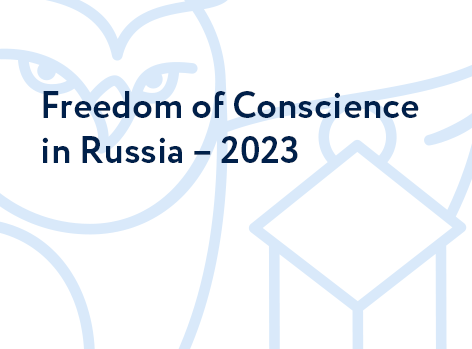Mr. Chairman, distinguished members of the conference!
In my speech I would like to point out three issues that, based on our experience in Russia, tend to arise in the sphere of counteracting racist crime.
First of all, we must mention that law enforcement efforts concentrated on the issue of hate crime produced some very noticeable results; in the time period from 2008 to 2011 the level of racist violence in Russia was steadily decreasing. However, according to our data, there is no decrease projected for 2012. There are several reasons for this shifting trend; I will name only two of them.
First, legislation, and, to some extent, public opinion, tend to equate racist statements with racist crimes, and hate speech with hate crimes. At the same time, with growing access to Internet, the number of the racist statements skyrocketed. They constitute potential cases, which are very tempting for enforcement officials to prosecute. After all, such statements can always be found and are much easier to investigate and prove in court than an actual violent crime. Meanwhile, the extent of public danger from most online racist remarks is not very significant, at least when compared to actual violence. As a result, this year for the first time, the number of those convicted for hate speech in Russia exceeded the number of those convicted for racist violence.
Second, when a crime gets registered, a suspected possible hate motive is still not being recorded. Therefore, in many cases where this motive was present, it is never investigated. In many, if not most, of the cases where the hate motive was, nonetheless, investigated, it seems that the investigation was not initiated by the regular police, but instead came as a result of intervention by the specialized anti-extremist units that monitor suspicious groups. The investigation, so to say, starts not because of an existing victim, but because of an existing criminal. It is true that this system has already produced good results, but their consolidation and further development requires more serious mechanisms for encouraging hate crime investigations.
There is also the third problem. We all agree that the hate crimes legislation is not aimed against civil liberties. However, there are many people who believe differently. Every new misapplication of this legislation discredits the legislation itself and the existing positive law enforcement experience in the eyes of citizens. When utilizing such a politically sensitive legislation compliance with all the procedural rules becomes particularly important.
Our recommendations:
For the OSCE:
1. Compile and distribute the experience gained from prior comprehensive efforts against groups that practice racist violence, including specific criminal investigations, detection and destruction of the groups’ infrastructure, isolation of their funding sources, identifying organizers and coordinators of violent actions, etc. Hold an international expert workshop on this topic, if needed.
2. Organize a seminar for law enforcement officials from different countries, presenting a summary of successful practices for collecting information and recording hate crimes statistics.
For the OSCE Participating States:
1. More actively use the information collected by non-governmental organizations that perform systematic monitoring of racist groups. Despite methodological, and even political, differences, such cooperation can be very productive.
2. Adjust the legislative framework covering hate crimes and related activities, including public incitement, organizing, financing, etc. Legislation should focus law enforcement efforts, first and foremost, on prosecuting the most dangerous crimes against the person. The internal policies and regulations of the law enforcement agencies should reflect the same priorities.
3. Change the crime reporting system so that suspected hate motive could be recorded at any stage, including the earliest one.
4. Publish hate crime statistics, highlighting the different types, regions, and number of victims. Official statistics should be based on court results (for both proven and unproven cases), and not on the number of opened criminal cases.
5. Actively participate in the TAHCLE training program for police officers.


